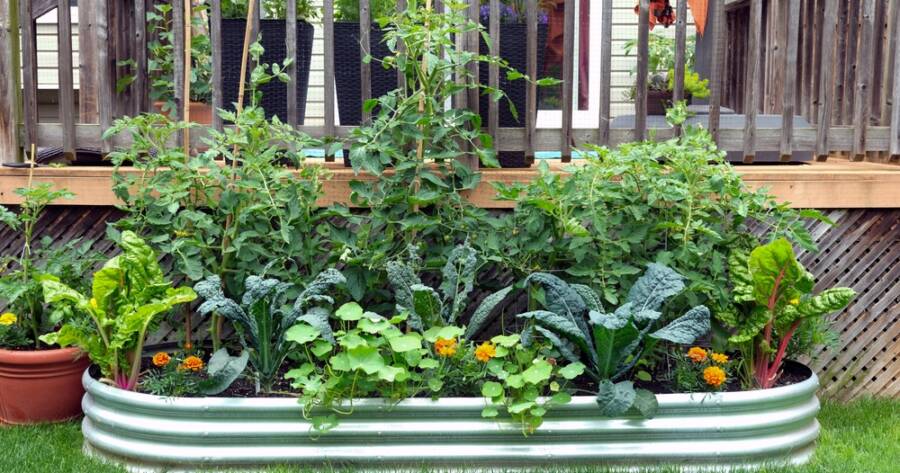When you think of a thriving garden, you might picture vibrant colors and healthy, flourishing plants. But there’s more to a successful garden than meets the eye. Companion planting, a method that involves strategically placing plants together, can significantly enhance the health and yield of your garden. Imagine a garden where plants work in harmony, supporting each other’s growth and naturally deterring pests — that’s possible with companion planting!
What Is Companion Planting?
Companion planting is the practice of growing different plants near each other for mutual benefit. Some plants help others by improving soil nutrients, repelling pests, or even providing shade. This ancient method enhances growth while naturally balancing the garden ecosystem. When done right, companion planting encourages natural partnerships between plants, promoting a healthier, more productive garden. It can take your backyard garden to the next level.
Benefits of Companion Planting
Companion planting has many benefits for your garden. One of the main benefits is pest control. Certain plants can repel harmful insects, minimizing the need for chemical pesticides. For example, some gardeners say marigolds deter aphids, while basil wards off mosquitoes and flies. Additionally, companion planting can boost soil health. Legumes, for instance, enrich the soil with nitrogen, which benefits nearby plants like tomatoes. Another key benefit is space efficiency, as companion plants can often be grown closer together without competing for resources, maximizing your garden’s output.
Popular Companion Plant Pairs
Certain plant pairs work exceptionally well together. Tomatoes and basil are a famous example; basil repels pests that would otherwise feast on tomato plants. Corn, beans, and squash form another effective trio known as the “Three Sisters.” Corn provides a natural trellis for the beans, beans enrich the soil with nitrogen, and squash covers the ground, suppressing weeds and retaining moisture. These time-tested pairings can lead to a bountiful garden with minimal effort.
Enhancing Pollination
Companion planting can also improve pollination, which is vital for fruiting plants. Flowers like lavender and zinnias attract bees and other pollinators, which in turn increase the pollination rate of crops such as cucumbers, strawberries, and melons. This natural attraction of beneficial insects not only helps the garden flourish but also encourages biodiversity. When your garden teems with pollinators, your plants will have a better chance of producing high yields.
Pest Prevention
Another major aspect of companion planting is pest management. Some plants produce chemicals or scents that repel harmful insects, reducing the need for artificial pesticides. Nasturtiums, for instance, attract aphids away from vegetables, acting as a “trap crop.” Garlic and onions deter many common pests, such as Japanese beetles and root maggots. By strategically placing these plants throughout your garden, you create a natural pest barrier that protects your crops and maintains the garden’s health.
Improve Soil Health
Soil health is the foundation of a successful garden, and companion planting can help. Deep-rooted plants like carrots or beets break up compacted soil, improving water flow and aeration for neighboring plants. Legumes like peas and beans work symbiotically with soil bacteria to fix nitrogen, enriching the soil for future crops. By rotating your companion plants and including those that enhance soil structure, your garden soil will become more fertile and better suited for sustained growth.
Reducing Disease
Certain plant combinations can help reduce the spread of disease in your garden by creating natural barriers and promoting healthier growth. For example, planting garlic near roses can help protect them from fungal infections. Similarly, spacing susceptible plants, like tomatoes and potatoes, with disease-resistant companions, like marigolds or nasturtiums, can prevent harmful pathogens from spreading. With the right companion plants, you can help protect your garden against disease naturally, without resorting to chemicals.
Maximizing Garden Space
Companion planting also allows gardeners to make the most of limited space by growing plants together that complement each other. Tall plants, like sunflowers, can provide shade for heat-sensitive crops, while ground-cover plants, such as thyme, can prevent weeds from taking root. By carefully planning which plants to place next to one another, you can maximize every inch of your garden without overcrowding it, ensuring all plants thrive.
Enhancing Garden Aesthetics
Companion planting isn’t just practical — it can also beautify your garden. By mixing flowering plants like calendula or nasturtiums with vegetables and herbs, you introduce splashes of color that can turn a simple garden into a vibrant landscape. Some plants, such as lavender or rosemary, not only add visual appeal but also release aromatic scents that create a more enjoyable space. Blending form with function, companion planting can create an aesthetic garden that’s as attractive as it is productive.
Benefits of Gardening for You
Companion planting not only helps your garden thrive but also benefits you. The act of tending to your garden — whether you’re planting companion crops, pulling weeds, or harvesting vegetables — provides a rewarding physical activity that improves strength and flexibility. Additionally, spending time among your plants, surrounded by the benefits of companion gardening, can reduce stress, boost your mood, and promote overall mental health. By incorporating companion planting, you’re not just nurturing your garden; you’re also cultivating better health for yourself.
Unlock the Full Potential of Your Garden With Companion Planting
Companion planting is a powerful tool that can transform your garden into a more efficient and healthier space. By choosing plants that support each other in different ways, you can enhance pollination, control pests, and improve soil health — all while maximizing your garden’s yield. Embrace the natural synergy of plants, and watch your garden thrive like never before.

